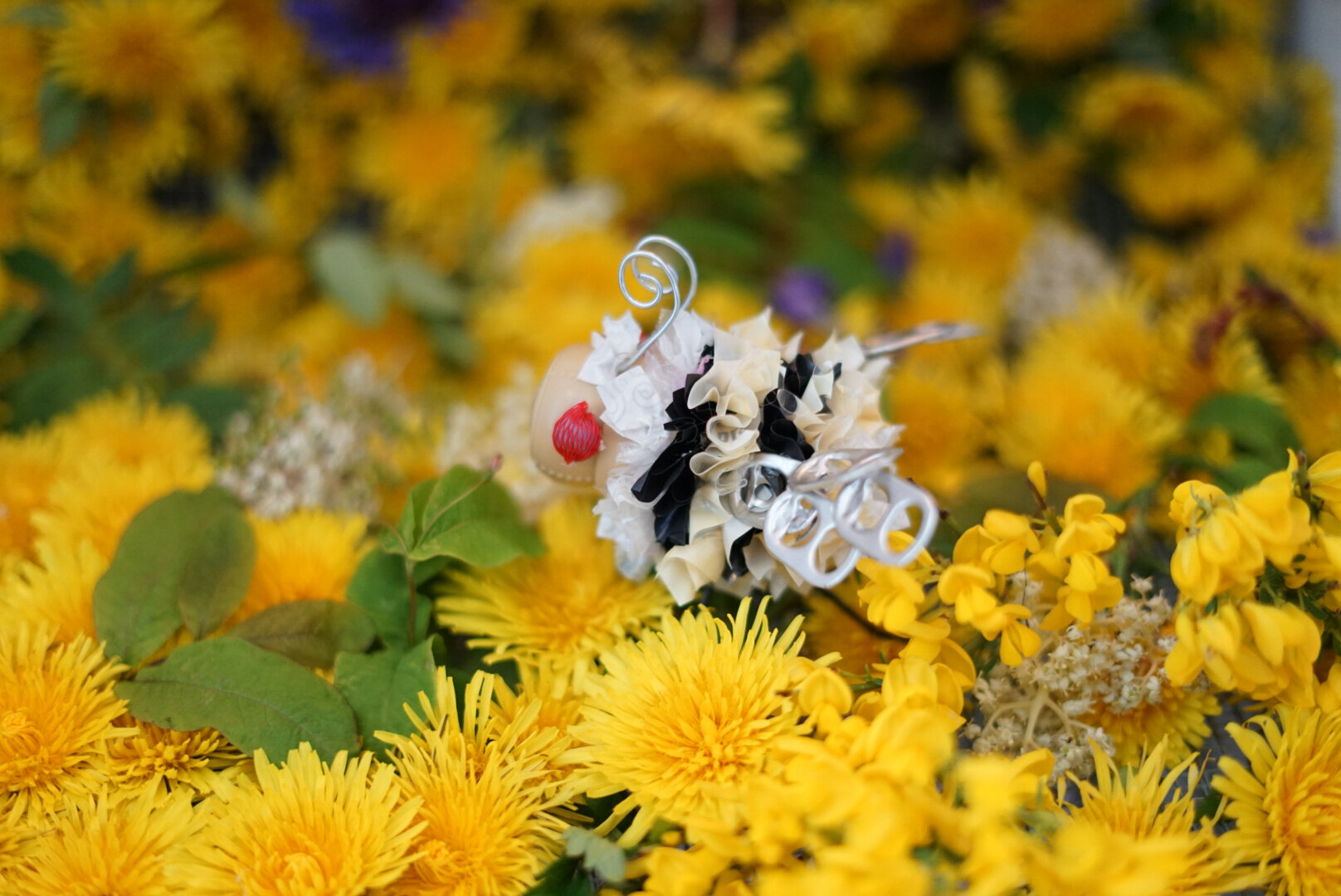Environmentally Conscious Art: An interview with Fræ
Translation: Stefán Ingvar Vigfússon
Fræ, which translates to seeds, hopes to reach people through performances and raise awareness of the environment. Ragnhildur Katla Jónsdóttir and Sædís Harpa Stefánsdóttir are the creators of the art. This journalist wanted to get to know them better and learn about the ideology behind Fræ.
Photo / Sædís Harpa Stefánsdóttir
Ragnhildur is a 21-year-old artist who studies psychology at the University of Iceland. Over the last two years, she has traveled around the world, including to the United States, where she studied oil painting and working with clay. Ragnhildur is an environmental activist and wants to start a dialogue on consumerism as well as spark interest in the environment through creative means. She contacted Sædís in early 2020 with the idea behind Fræ, having met her two years earlier. The duo immediately formed a good working relationship through their art and common interest in the environment. Sædís is a 25-year-old musician and photographer for the Student Paper and holds a bachelor's degree in leisure studies. Her interest in art creation led her to earn a master’s in elementary school education, focusing on visual arts, where she works a great deal with sustainability with children. Fræ give the artists an opportunity to express themselves in varied ways, but they feel their strength lies in diversity, as their works speak to one another. Sædís works with photography and musical composition, while Ragnhildur works more with sculpture.
How did you start making environmentally conscious art?
It started as a creative summer job in Kópavogur in the summer of 2020, where we focused on sculptures using materials that would usually end up in recycling or waste bins. Along with the sculptures, there were pictures and a social media account we used to spread the message and give people insight into the process. Environmentalism has always been important to us, and we felt this was a perfect platform for us to showcase this. Art has the power to spark conversations and raise questions that hopefully lead to societal change.
The Bees
are mostly made from plastic and corks from beverages. They represent the main heroes of the environment, but with the expansion of cities and global warming, their lives have been threatened.
Where do you get your material?
We mainly use material that falls under the category of household waste and is not natural. For example, plastic, cardboard, old utility items, and textiles. We have sometimes used natural materials to showcase the interplay of nature versus toxic materials and how our consumption impacts that.
Does the material inspire the work or do you start with a preconceived idea?
There’s a sort of interplay between the sculptures and the material. We start examining what objectives we want to put forth. For example, we had an idea based on plastic in the ocean and the outcome was a wave of plastic. We examine the issues that dominate the discourse at any given time and consider how best to highlight them with art.
Photo / Sædís Harpa Stefánsdóttir
You work with different forms of art. What determines it?
The subject is massive and we felt it was important to tackle it in varied ways. There’s no one way to convey the message. There are no coincidences in our work, but it evolves in different ways. We are different from one another as artists, and we interpret our work through different mediums.
The cycle of the trees
is a sculpture made from paper - ice cream containers and newspapers. They reform the tree. Paper, as a material, is pervasive in society and is constantly being produced, even though we have so much of it already.
How do you intertwine environmental consciousness and artistic work?
We examine different sides of environmentalism, but we’ve mainly been focusing on the toxicity of consumerism in recent years. We wanted to spark interest and understanding of the importance of conscious consumerism. Consumerism is a part of the problem and there we, as consumers, have the power. It is not enough that a few give 100%, everyone has to give a little to the cause. We encourage people to take baby steps and big steps, but mainly to look inwards.
Are you currently working on anything, and when can we expect to see more from Fræ?
We are currently working on a project in a school in the capital region as part of a project called LÁN (an artistic appeal to nature). The project revolves around children's connection to plastic as a material and their work will be shown at the Children’s Culture Festival. We hope to continue to work with Fræ, because we have a lot to say and a lot to fight for.
How do you want to see the future unfold in relation to the environment?
It’s clear that the main culprits of global warming and pollution are big factories and companies. Still, it’s not true that the public can’t have any impact. The more aware we are about the environment, the more likely it is that we can incite change. The hope is that individuals’ conscious consumerism can change the means of production, leading to a greener future. We live in a time of unprecedented comfort, which can negatively impact our environment.
We must remember that we are not alone, and if we continue living like the average westerner, then the earth can’t sustain us.
The plastic wave
represents all the plastic that goes into the sea every day and threatens marine life. Here, plastic is woven into wire mesh and shaped like waves.
What is the group’s message?
One of our main focuses is that nothing is disposable unless it is disposed of. Especially the materials we use so much of in today's society, like plastic containers that are thrown away after a single use. Like we’ve said, the key is cultivating diverse discussions and planting seeds that will hopefully impact the future.





